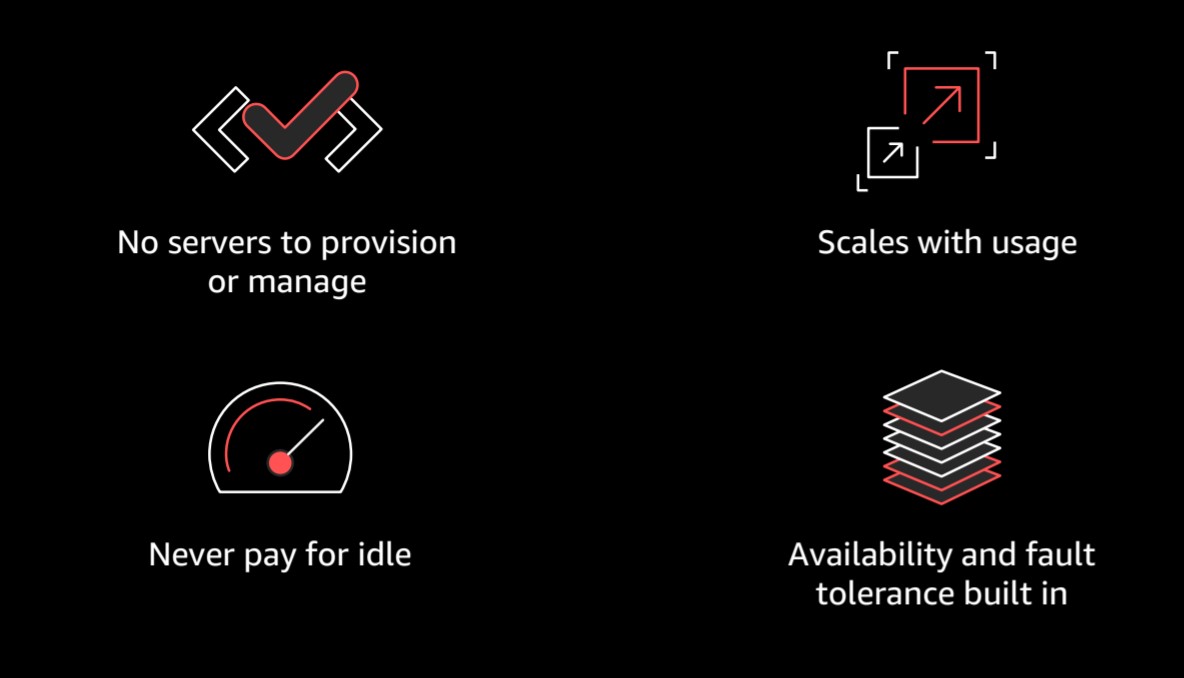Amazon Web Services (AWS)
Amazon Web Services

“The future is already here — it's just not very evenly distributed.”
What is AWS?
Amazon Web Services (AWS) is the world’s most comprehensive and broadly adopted cloud platform, offering over 175 fully featured services from data centers globally. Millions of customers—including the fastest-growing startups, largest enterprises, and leading government agencies—are using AWS to lower costs, become more agile, and innovate faster.The AWS Cloud spans 76 Availability Zones within 24 geographic regions around the world.

Why PTCL is offering AWS services?
The AWS partnership is for PTCL a strategical milestone on the way into the hybrid cloud area.
Every hype cycle has its own players that rule the IT market. Open cloud services are dominating the IT market and AWS is the market leader by far. We are trying to get cloud players like AWS or Google to invest into our country. PTCL, as one of the biggest Cloud provider in local market, teams up with the best cloud services of the industry to provide best-in-class solutions.
PTCL has a primary focus on IT architecture and Hybrid Cloud solutions. Most projects today focus on IaaS. Our ambition is clearly to help our clients on their journey to open up their IT architecture to the open cloud. As a AWS consulting partner, we have a focus on providing AWS Cloud services and migration projects. As a Managed Service Provider in Pakistan we further have the ambition to become Managed Service Partner for AWS services. We want to offer our clients a 360-degree service contract for all their services that are running on-premise, in our Datacenters and in AWS.
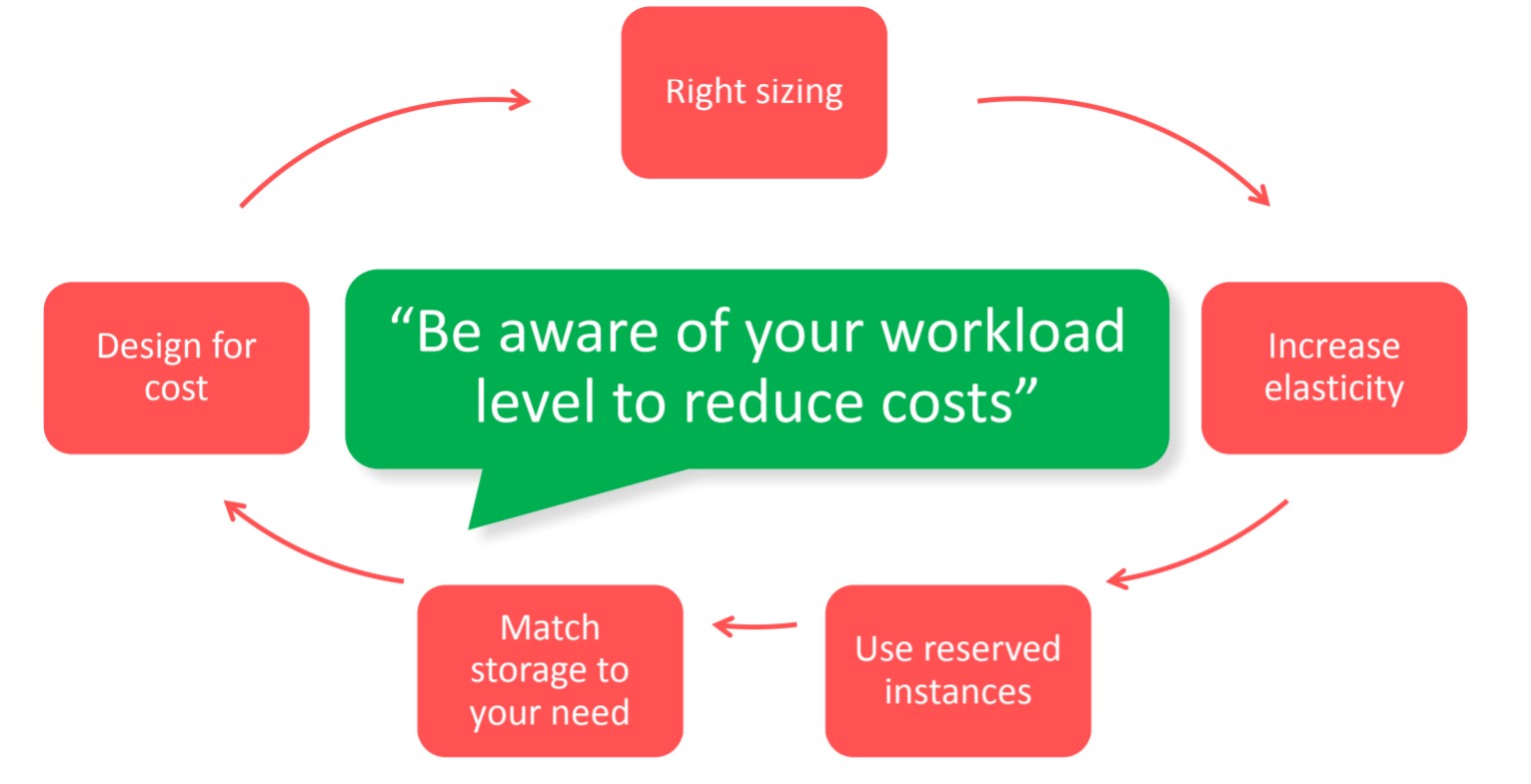
Overview of AWS Services:
The compute services in AWS are at the heart of an amazing pace of innovation growth. There is a far better security and compliance inside AWS than on-prem or at any local provider. The availability on compute level, without any clustering or other additional redundancy means, is at 99.99%. With the right sizing an IaaS solution in AWS will always outperform any on-prem solution in terms of availability, agility and pricing. While on-prem infrastructure always requires new investments, as a subscription based service, your cloud gets better and cheaper every day. In the enterprise segment we see more and more workloads running in containers. Building and maintaining a Kubernetes environment to manage container lifecycles on-prem, makes no sense from effort and cost perspective. No OS patching anymore.
Getting close to 60 availability zones within the next year, there is always one next to you. PTCL Successfully build the Direct connect with AWS Bahrain Data center last year.
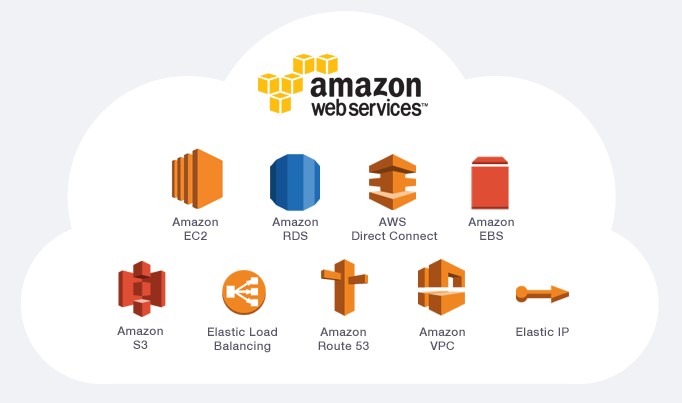
Amazon EC2
Amazon Elastic Compute Cloud (Amazon EC2) is a web service that provides secure, resizable compute capacity in the cloud. It is designed to make web-scale computing easier for developers.
The Amazon EC2 simple web service interface allows you to obtain and configure capacity with minimal friction. It provides you with complete control of your computing resources and lets you run on Amazon’s proven computing environment. Amazon EC2 reduces the time required to obtain and boot new server instances (called Amazon EC2 instances) to minutes, allowing you to quickly scale capacity, both up and down, as your computing requirements change. Amazon EC2 changes the economics of computing by allowing you to pay only for capacity that you actually use. Amazon EC2 provides developers and system administrators the tools to build failure resilient applications and isolate themselves from common failure scenarios.

Instance Types
Amazon EC2 passes on to you the financial benefits of Amazon’s scale. You pay a very low rate for the compute capacity you actually consume. See Amazon EC2 Instance Purchasing Options for a more detailed description.
On-Demand Instances—With On-Demand instances, you pay for compute capacity by the hour with no long-term commitments. You can increase or decrease your compute capacity depending on the demands of your application and only pay the specified hourly rate for the instances you use. The use of On-Demand instances frees you from the costs and complexities of planning, purchasing, and maintaining hardware and transforms what are commonly large fixed costs into much smaller variable costs. On-Demand instances also remove the need to buy “safety net” capacity to handle periodic traffic spikes.
Reserved Instances—Reserved Instances provide you with a significant discount (up to 75%) compared to On-Demand instance pricing. You have the flexibility to change families, operating system types, and tenancies while benefitting from Reserved Instance pricing when you use Convertible Reserved Instances.
Spot Instances—Spot Instances are available at up to a 90% discount compared to On-Demand prices and let you take advantage of unused EC2 capacity in the AWS Cloud. You can significantly reduce the cost of running your applications, grow your application’s compute capacity and throughput for the same budget, and enable new types of cloud computing applications.
Amazon Elastic Container Service
Amazon Elastic Container Service (Amazon ECS) is a highly scalable, high-performance container orchestration service that supports Docker containers and allows you to easily run and scale containerized applications on AWS. Amazon ECS eliminates the need for you to install and operate your own container orchestration software, manage and scale a cluster of virtual machines, or schedule containers on those virtual machines.
With simple API calls, you can launch and stop Docker-enabled applications, query the complete state of your application, and access many familiar features such as IAM roles, security groups, load balancers, Amazon CloudWatch Events, AWS CloudFormation templates, and AWS CloudTrail logs.
Amazon S3
Amazon Simple Storage Service (Amazon S3) is an object storage service that offers industry-leading scalability, data availability, security, and performance. This means customers of all sizes and industries can use it to store and protect any amount of data for a range of use cases, such as websites, mobile applications, backup and restore, archive, enterprise applications, IoT devices, and big data analytics. Amazon S3 provides easy-to-use management features so you can organize your data and configure finely-tuned access controls to meet your specific business, organizational, and compliance requirements. Amazon S3 is designed for 99.999999999% (11 9's) of durability, and stores data for millions of applications for companies all around the world.

Amazon Elastic Block Store Amazon Elastic Block Store (Amazon EBS) provides persistent block storage volumes for use with Amazon EC2 instances in the AWS Cloud. Each Amazon EBS volume is automatically replicated within its Availability Zone to protect you from component failure, offering high availability and durability. Amazon EBS volumes offer the consistent and low-latency performance needed to run your workloads. With Amazon EBS, you can scale your usage up or down within minutes—all while paying a low price for only what you provision.

Amazon Elastic File System
Amazon Elastic File System (Amazon EFS) provides a simple, scalable, elastic file system for Linux-based workloads for use with AWS Cloud services and on-premises resources. It is built to scale on demand to petabytes without disrupting applications, growing and shrinking automatically as you add and remove files, so your applications have the storage they need – when they need it. It is designed to provide massively parallel shared access to thousands of Amazon EC2 instances, enabling your applications to achieve high levels of aggregate throughput and IOPS with consistent low latencies. Amazon EFS is a fully managed service that requires no changes to your existing applications and tools, providing access through a standard file system interface for seamless integration. Amazon EFS is a regional service storing data within and across multiple Availability Zones (AZs) for high availability and durability. You can access your file systems across AZs and regions and share files between thousands of Amazon EC2 instances and on-premises servers via AWS Direct Connect or AWS VPN.
Amazon VPC
Amazon Virtual Private Cloud (Amazon VPC) lets you provision a logically isolated section of the AWS Cloud where you can launch AWS resources in a virtual network that you define. You have complete control over your virtual networking environment, including selection of your own IP address range, creation of subnets, and configuration of route tables and network gateways. You can use both IPv4 and IPv6 in your VPC for secure and easy access to resources and applications.
Amazon Route 53
Amazon Route 53 is a highly available and scalable cloud Domain Name System (DNS) web service. It is designed to give developers and businesses an extremely reliable and cost-effective way to route end users to Internet applications by translating human readable names, such as www.example.com, into the numeric IP addresses, such as 192.0.2.1, that computers use to connect to each other. Amazon Route 53 is fully compliant with IPv6 as well.
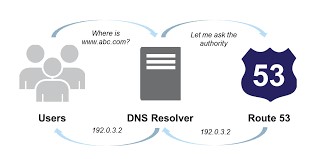
AWS Direct Connect
AWS Direct Connect makes it easy to establish a dedicated network connection from your premises to AWS. Using AWS Direct Connect, you can establish private connectivity between AWS and your data center, office, or co-location environment, which in many cases can reduce your network costs, increase bandwidth throughput, and provide a more consistent network experience than Internet-based connections.
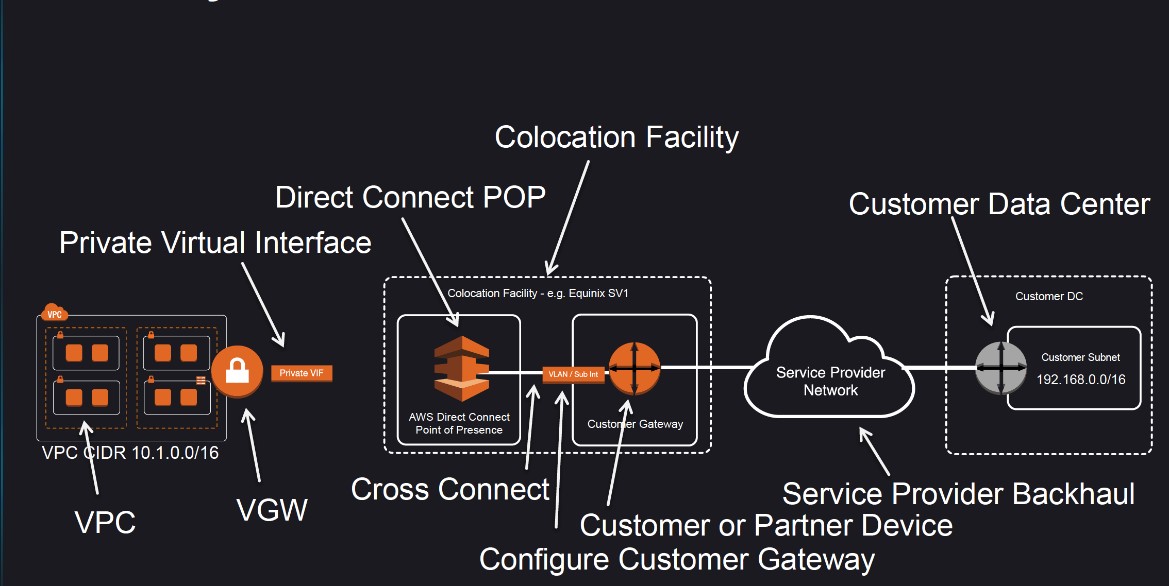
Elastic Load Balancing
Elastic Load Balancing (ELB) automatically distributes incoming application traffic across multiple targets, such as Amazon EC2 instances, containers, and IP addresses. It can handle the varying load of your application traffic in a single Availability Zone or across multiple Availability Zones. Elastic Load Balancing offers three types of load balancers that all feature the high availability, automatic scaling, and robust security necessary to make your applications fault tolerant.
AWS CloudHSM
The AWS CloudHSM is a cloud-based hardware security module (HSM) that enables you to easily generate and use your own encryption keys on the AWS Cloud. With CloudHSM, you can manage your own encryption keys using FIPS 140-2 Level 3 validated HSMs. CloudHSM offers you the flexibility to integrate with your applications using industry-standard APIs, such as PKCS#11, Java Cryptography Extensions (JCE), and Microsoft CryptoNG (CNG) libraries.
AWS WAF
AWS WAF is a web application firewall that helps protect your web applications from common web exploits that could affect application availability, compromise security, or consume excessive resources. AWS WAF gives you control over which traffic to allow or block to your web application by defining customizable web security rules. You can use AWS WAF to create custom rules that block common attack patterns, such as SQL injection or cross-site scripting, and rules that are designed for your specific application. New rules can be deployed within minutes, letting you respond quickly to changing traffic patterns. Also, AWS WAF includes a full-featured API that you can use to automate the creation, deployment, and maintenance of web security rules.
Amazon Aurora
Amazon Aurora is a MySQL and PostgreSQL compatible relational database engine that combines the speed and availability of high-end commercial databases with the simplicity and cost-effectiveness of open source databases
Amazon Relational Database Service
Amazon Relational Database Service (Amazon RDS) makes it easy to set up, operate, and scale a relational database in the cloud. It provides cost-efficient and resizable capacity while automating time-consuming administration tasks such as hardware provisioning, database setup, patching and backups. It frees you to focus on your applications so you can give them the fast performance, high availability, security and compatibility they need.

AWS Security Solutions

AWS Supporting services

What set’s AWS apart?
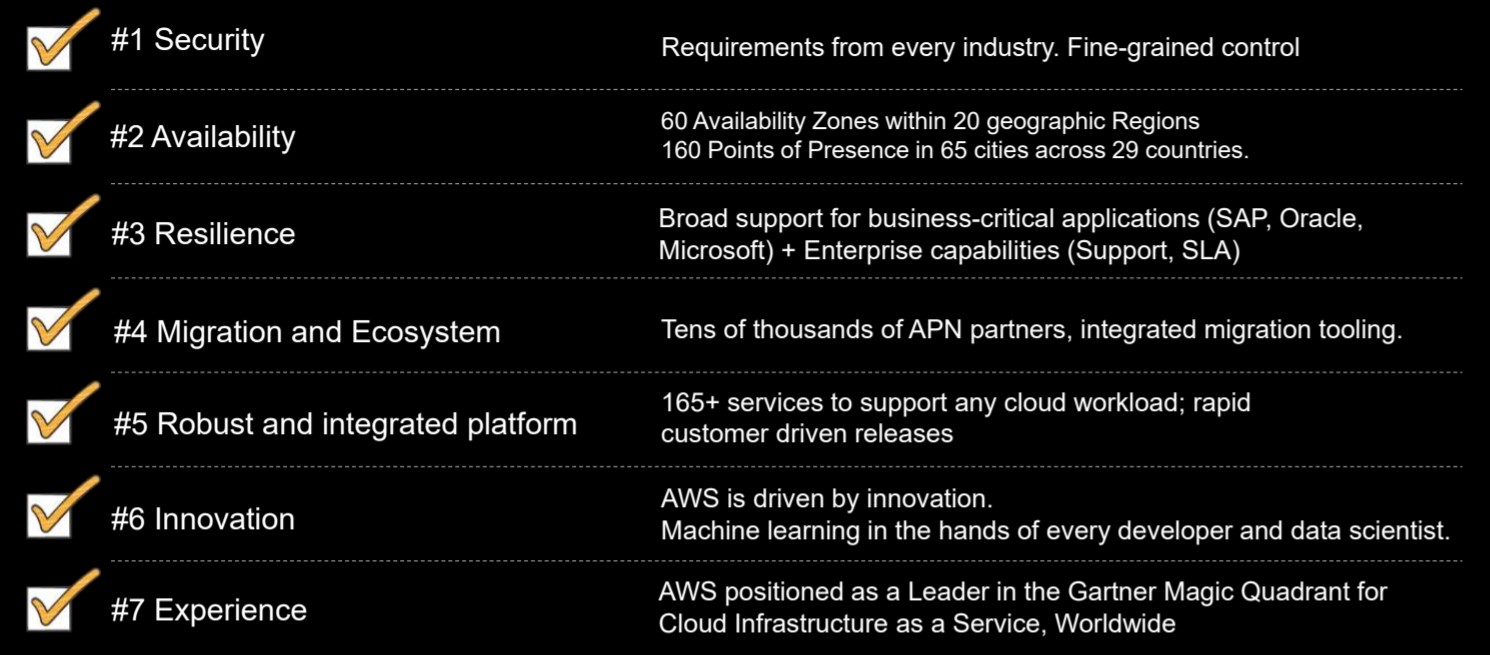
On-prem vs AWS
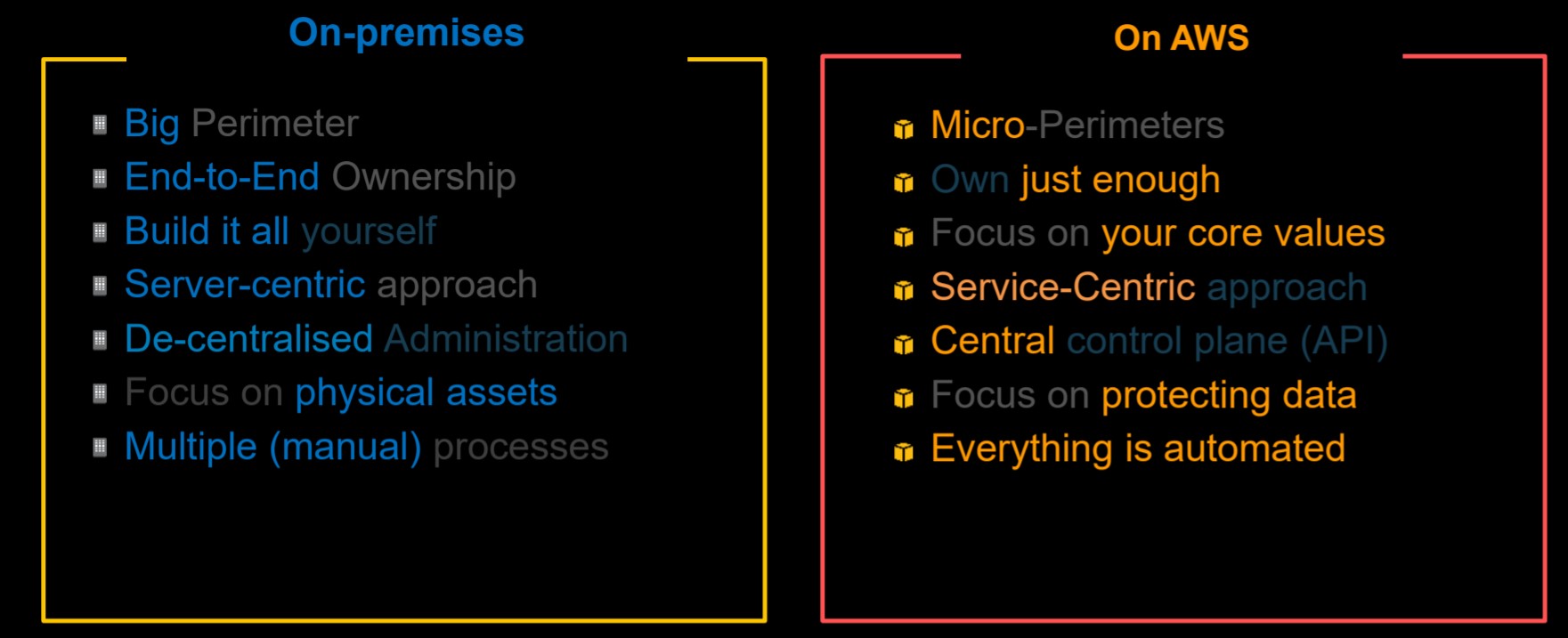
Security Assurance

AWS Serverless service Advantages
